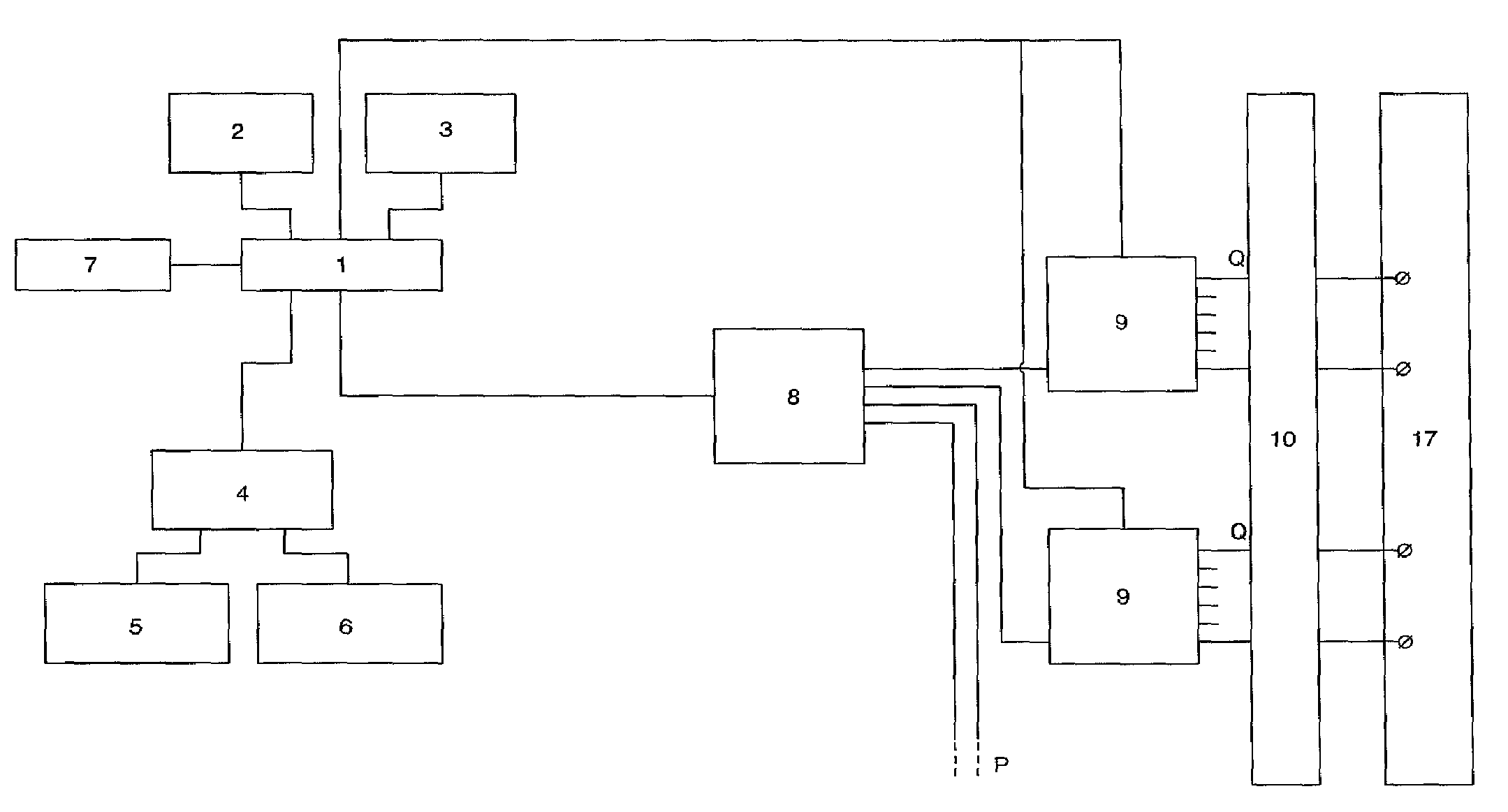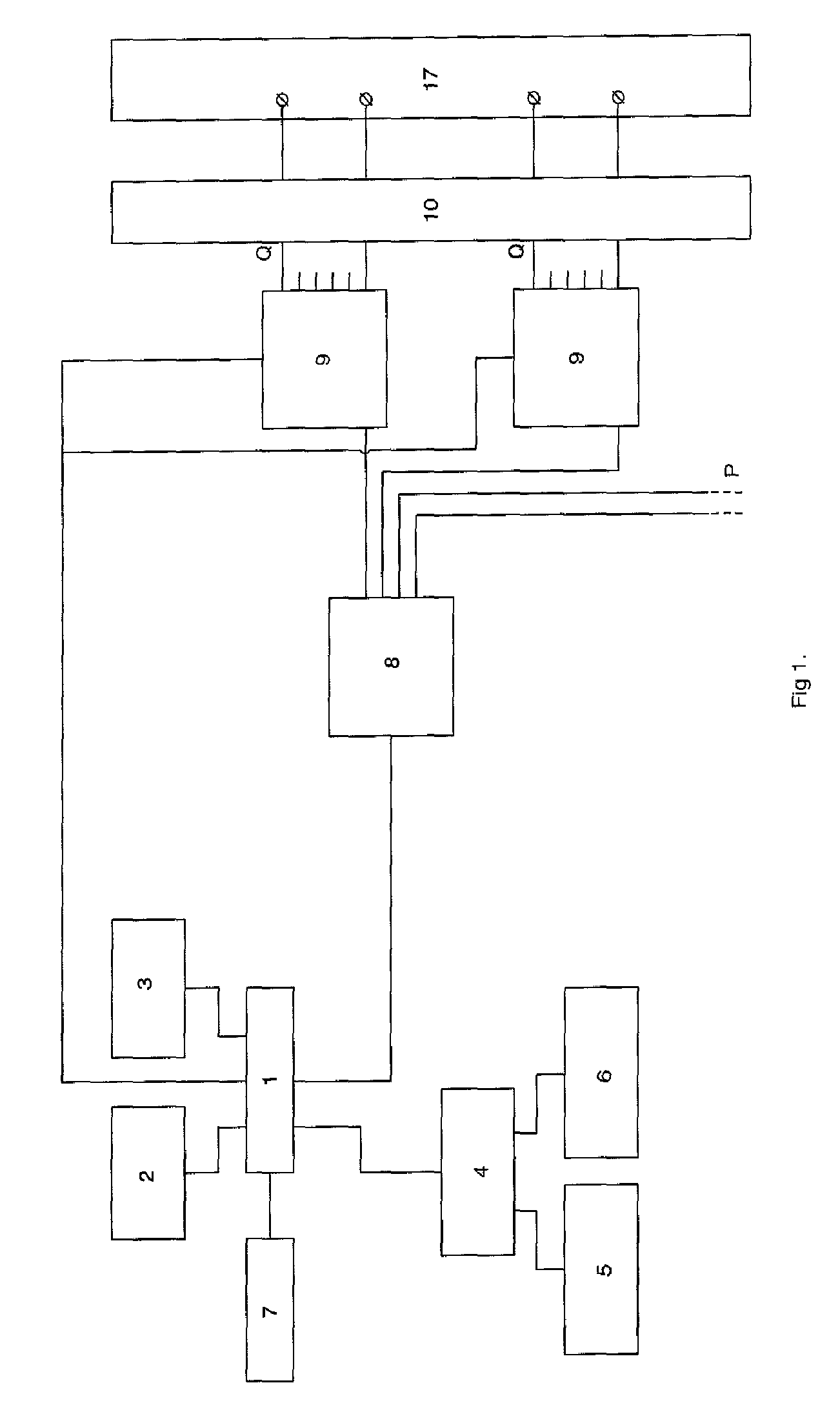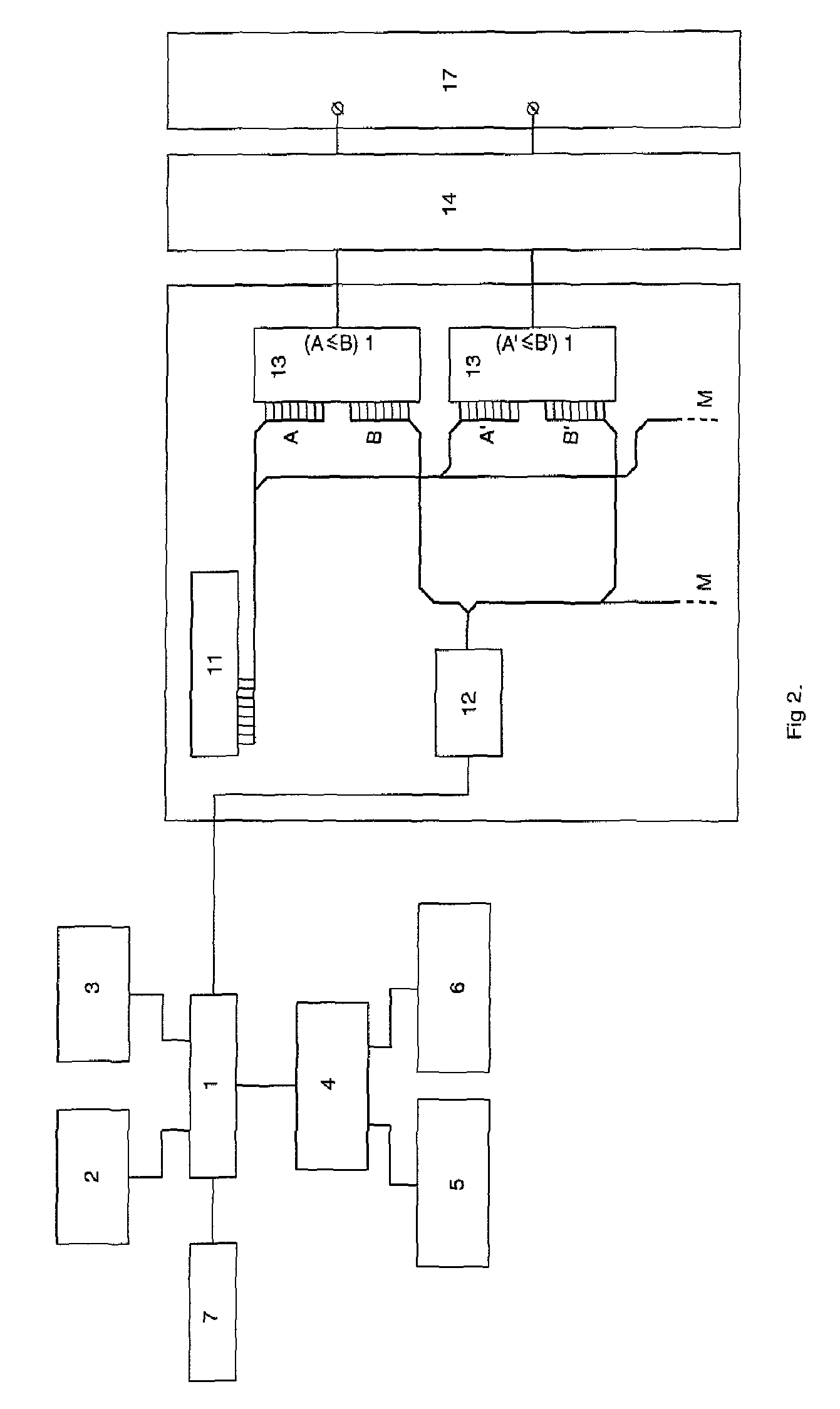Electronic Filter Device for the Reception of TV Signals
- Summary
- Abstract
- Description
- Claims
- Application Information
AI Technical Summary
Benefits of technology
Problems solved by technology
Method used
Image
Examples
Embodiment Construction
[0025] The prior art device of FIG. 1 is the one which is known from GB-A-2272341. It comprises a microcontroller 1, a non-volatile memory (NVM) 2 for storing factory data and settings made in the field by the installer, a PC-interface 3, for instance for firmware upgrades or changing the settings of the device, a user-interface logic 4 with user-interface input devices 5 and user-interface output devices 6, an RF detection circuit 7 to detect the RF-level needed for an automatic equalization function, a plurality of DACs 8 to generate analog voltages, a plurality of switches 9 (or dynamic multiplexers), and a dynamic memory 10 with “analog storage locations” for storing the analog voltages. The analog voltages are supplied to a bank 17 of voltage outputs and are used for setting frequency determining elements of the RF-circuitry. In FIG. 1, the amount of DACs is P, the amount of dynamic switches is also P and the number of outputs per dynamic switch is Q. A complex dynamic algorith...
PUM
 Login to View More
Login to View More Abstract
Description
Claims
Application Information
 Login to View More
Login to View More - R&D
- Intellectual Property
- Life Sciences
- Materials
- Tech Scout
- Unparalleled Data Quality
- Higher Quality Content
- 60% Fewer Hallucinations
Browse by: Latest US Patents, China's latest patents, Technical Efficacy Thesaurus, Application Domain, Technology Topic, Popular Technical Reports.
© 2025 PatSnap. All rights reserved.Legal|Privacy policy|Modern Slavery Act Transparency Statement|Sitemap|About US| Contact US: help@patsnap.com



